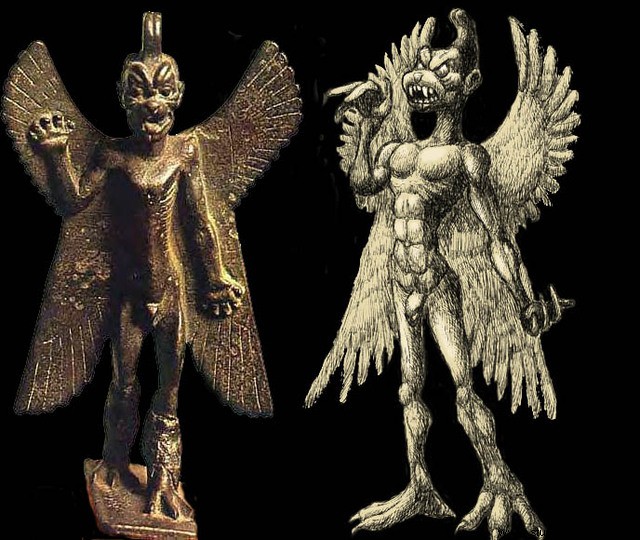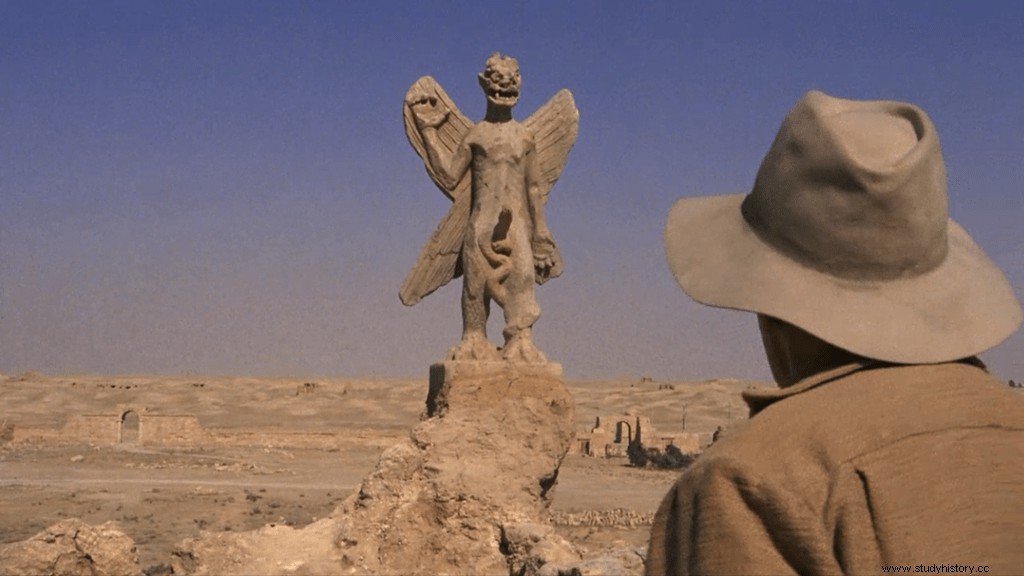In the Sumerian religion, hell was not a place of damnation. For the Sumerians there was no idea of reward or punishment after death. Human beings had been created to serve the gods, and sin therefore only existed in relation to faults against the divinity. Hell (they called it “world on the other side ”) was conceived as a place to go after death and in that place there were no flavors, no colors, no smells... It was a gray, boring and insipid place. If you were lucky and had flattered the gods enough, you might be allowed to spend eternity in their service in one of the hellish palaces. At least you wouldn't get so bored.

Pazuzu
Also at the service of the gods were devils and demonesses. These, unlike in the Judeo-Christian culture, were not essentially malignant. Let's say they were just doing their job, which was to settle accounts with humans when they offended a god (you know, "it's nothing personal, it's just business ”). Of course, just as the Sumerian pantheon had more than 3,600 gods, there were demons for all kinds of torture, humiliation and punishment. Depending on the god they served, and depending on their specialty, they could be more or less powerful. Possibly the most dangerous devil of all was Pazuzu . His fame was so great that it lasted more than two thousand years, and reached our days through the current Hollywood cinema, since the image of the devil that appears in the movie " The Exorcist ” is a statuette of Pazuzu found in some excavations.

The Sumerians were terribly afraid of him, as he was in charge of punishing humans with burning fevers, pestilences and equally burning winds. Between the drought and the lack of ibuprofen, the poor Sumerians frequently ended up in the graveyard. Keep in mind that the Sumerian cities, especially those in the south, in those days were surrounded by swamps. This was good for stocking the pantry, for these swamps were teeming with waterfowl and fish, but they were also the focus of fevers, which in peacetime were the leading cause of death. It has been estimated that 7 out of 10 boys did not reach puberty. Therefore, the Sumerians decided to make Pazuzu the protector of newborn children. In this way, mothers placed Pazuzu amulets among the clothes of infants. What better way to protect the child from the fever, than to choose as a bodyguard the very one who brings the fever! As if that were not enough, Pazuzu was married to the demoness Lamashtu , which was one of the most powerful and specialized in devouring children and causing abortions by touching the womb of pregnant women seven times. Pazuzu was the only one capable of bringing her better half to heel. That way, complete business. There is no doubt that the Sumerians were always practical people.
Contributed by Joshua BedwyR author of In a Dark Blue World
